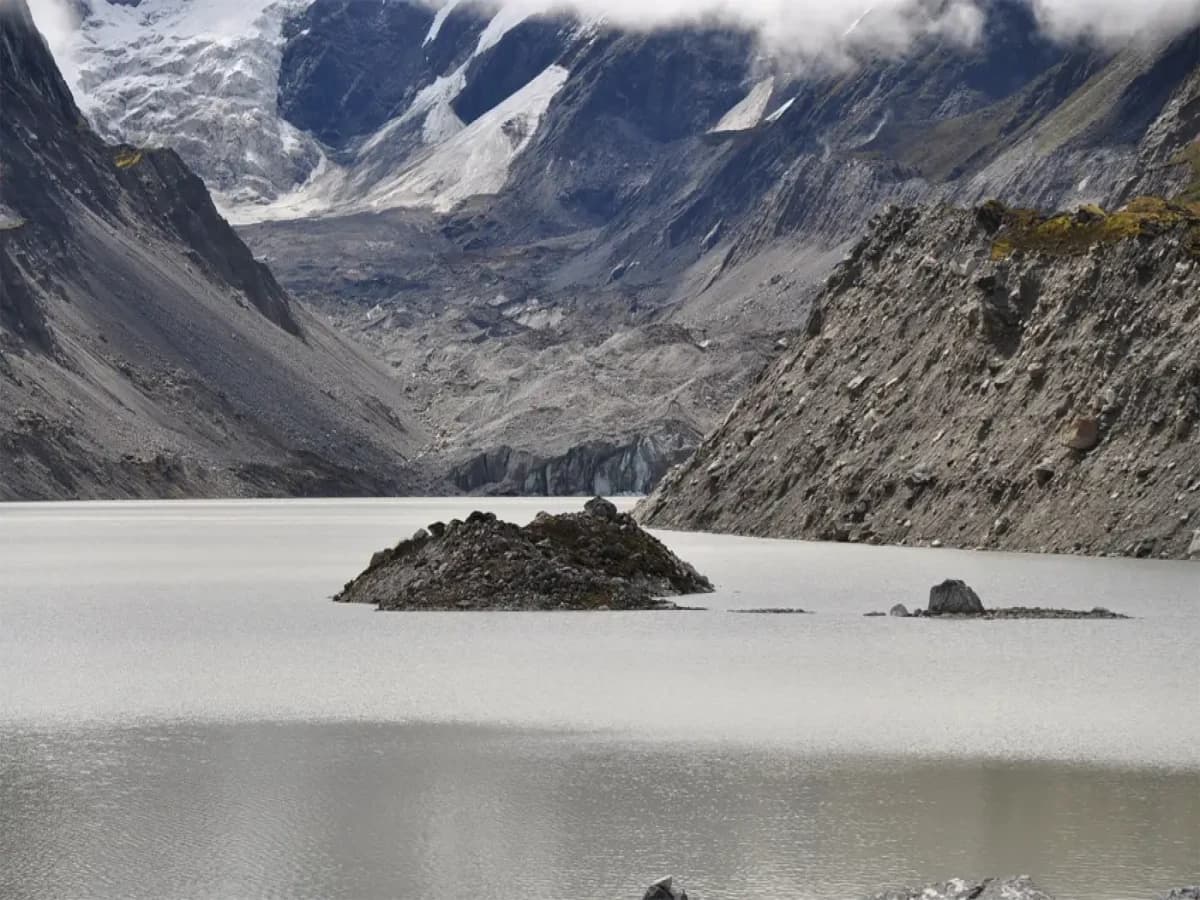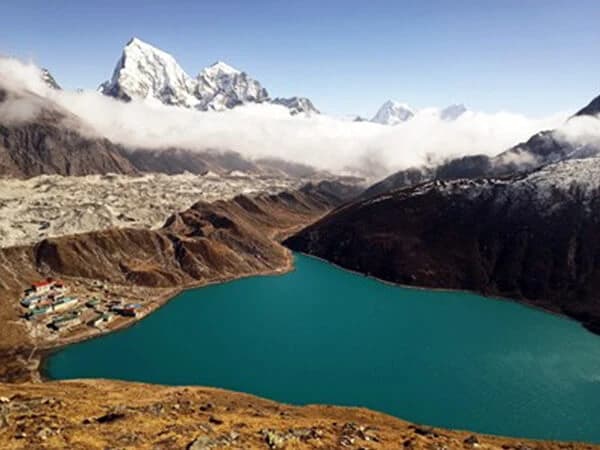Global Adventure Trekking takes you on a 9-day Tsho Rolpa Trek. Also known as the Gaurishankar View Trek, you can relish beautiful views of Gaurishankar and Melungtse peaks as you head to the turquoise Tsho Rolpa Lake at 4,580 meters. Suitable for trekkers with good physical fitness and endurance, this moderately difficult trek takes you along the off-the-beaten-path of the Rolwaling Valley, allowing you to immerse yourself in the unique Sherpa and Tamang cultures.
Tsho Rolpa Trek - 9 Days
Tsho Rolpa Trek Overview
The 9-day Tsho Rolpa Trek introduces you to the pristine beauty of Nepal across the off-the-beaten paths of the Rolwaling Valley. On this trek, you will find natural splendor blending in unison with the unique culture as you pass through local Sherpa communities, including Simigaon, Surmche, Kylche, Thangthing Kharka, Beding, and Na village, which lead you to the breathtaking Tsho Rolpa Lake.
The trail to Tsho Rolpa Lake, a sacred glacial lake known for its turquoise waters and serene ambiance, is among the least frequented trails across the Himalayas. Here, you will find a distinct local lifestyle, cultural heritage, and traditions that reflect the raw aura of the Himalayas.
You will begin your adventure from Kathmandu with a scenic but adventurous drive through Charikot, Sigati Bazaar, Gongar, and Chhet-Chhet. As you leave the bustling city behind, you will head toward the rugged mountain roads that lead you to the trekking route. During your trek, you will hike across the Gaurishankar Conservation Area and through lush rhododendron and pine forests.
The Tsho Rolpa Lake Trek further takes you across suspension bridges over the Tama Koshi River and through traditional villages inhabited by Sherpa and Tamang communities. As you travel from one settlement to another, you will find glimpses of the local Himalayan lifestyle that has remained unchanged for centuries.
While our itinerary is suitable for trekkers of all expertise, the more experienced trekkers can make their way from the Everest Base Camp trek via Thame and Tasi Lapcha La Pass en route to the Great Himalayan Trek.
Your destination is the majestic Tsho Rolpa Lake, located at 4,580 meters. Your efforts will be rewarded as you find yourself surrounded by towering and snow-capped peaks as you stand in front of the serene lake. Throughout your journey, you will constantly find breathtaking views of the Gaurishankar Himal (7,134 meters), Melungtse (7,181 meters), and other dramatic peaks.
Why Go on the Tsho Rolpa Trek?
Off-the-Beaten-Path Adventure
The Tsho Rolpa Trek takes you away from traditional trekking. During this 9-day journey into the Rolwaling Valley, you will travel the less-frequented routes, incorporating adventure and exploration as you surround yourself in the tranquility of the Himalayas. You can take in the authentic wilderness experience that allows you to connect more deeply with the raw beauty of Nepal.
Stunning Glacial Lake and Mountain Landscape
During the Tsho Ropla Lake Trek, you will find yourself amid the awe-inspiring beauty of Tsho Ropla. Likewise, you will also find magnificent, close-up views of the Gaurishankar (7,134 meters) and Melungtse (7,181 meters) during your journey.
Rich Cultural Immersion
Embark on a journey to the cultural heart of the Rolwaling Valley and experience the unique traditions and lifestyles of the Sherpa and Tamang communities during this trek. Furthermore, in ancient communities of Simigao and Beding, you will observe a lifestyle that has remained unchanged for centuries. You can also visit the Sangag Choling Monastery (also known as Beding Gompa) and the cliffside Retreat Gompa, where Guru Padmasambhava is believed to have meditated. In these religious centers, you can interact with the locals for further insight into their customs and rich heritage.
Contribute to Sustainable Tourism
Your adventure into the off-the-beaten-path trails of Tsho Rolpa allows you to contribute to the sustainable tourism of the region directly. You will further promote economic growth in a remote region by supporting local communities.
Tsho Rolpa Trek Cost: Permits, Guides, and Transport
The 9-day Tsho Rolpa Trek typically costs from USD 440 to USD 1010 per person. This price covers a round-trip drive between Kathmandu and Chhet Chhet, all necessary trekking permits (GCAP and TIMS), a licensed and experienced guide, all meals during the trek, and accommodation in local teahouses. However, the Tsho Ropla Lake Trek cost does not include porter charges. Porters are not mandatory, but they ensure a safer experience by allowing you to focus solely on your trek.
Furthermore, we advise carrying extra cash for personal expenses such as hot showers, charging electronic devices, Wi-Fi (where available), drinks, snacks, and tips for your guide and porter.Prices can vary based on group size and the specific services included.
Tsho Rolpa Trek Last Minute Booking
Looking for a last-minute booking for this incredible Tsho Rolpa Trek adventure? We offer a special 10% discount on this incredible Himalayan journey. Book your trek 7 to 14 days before the trek and join our fixed departure dates.
For more information, contact our expert representatives.
Tsho Rolpa Trekking Highlights
- Reaching the spectacular, turquoise waters of Tsho Rolpa Lake (4,580 m).
- Trekking through the remote and culturally rich Rolwaling Valley.
- Incredible views of Gaurishankar Himal, one of Nepal's most sacred peaks.
- Experiencing the authentic Sherpa village of Beding.
- The journey includes a scenic and adventurous drive from Kathmandu to the Himalayan village of Chhet-Chhet.
- Hiking through lush rhododendron and pine forests within the Gaurishankar Conservation Area.
- Cultural immersion in the Beding Gompa and Retreat Gompa.
A Typical Day During the Rolwaling Valley Trek (Tsho Rolpa Trek)
Each day on the remote Rowaling Valley Trek begins with the crisp mountain air and the gentle bustle of the teahouse kitchen. After a hearty breakfast of warm tsampa porridge, Musli, or Tibetan bread, your trek commences around 8 AM, allowing you to make the most of the daylight hours.
Your journey takes you across a diverse and rugged Himalayan landscape as you make your way through pristine rhododendron and pine forests, cross thrilling suspension bridges above the Rolwaling River and Tama Koshi River, and pass the traditional stone-walled Sherpa villages. Typically, you will hike 5 to 6 hours daily along gradual ascents and descents. Your efforts are rewarded with profound solitude and spectacular views of the Gaurishankar Himal range. Along the journey, you will also meet local cattle herders in the vast pastures of the Rolwaling Valley. At midday, you will stop at a small resthouse for a lunch break, where you can reenergize yourself for the remainder of the trek.
You will reach your overnight destination by late afternoon. The evening is for rest and acclimatization. In your simple yet welcoming teahouse, run by locals, you can gather in the communal dining hall to exchange experiences from your trek or engage in a game of cards with fellow travelers before a nourishing and unlimited serving of Dal Bhat, the lentil and rice dish that is the true fuel of the Himalayas. After dinner, you will head to bed for a much-deserved rest.
Customized Tsho Rolpa Trek 2025
The Tsho Rolpa Lake trek is a serene journey along the off-the-beaten paths of the Rolwaling Valley. This trek has been carefully mapped out, allowing you to experience a seamless blend of Himalayan adventure and cultural immersion. However, we understand that customizing the Tsho Rolpa Lake trek allows you to make the journey more personal.
Considering your requirements, needs, and priorities, we provide tailor-made options that best align with your preferences. With our customized treks, you can hike at your desired pace, add acclimatization days, or include a trek extension to some of the most serene regions by the Rolwaling Valley, including Dudh Pokhari Lake (4,700 meters): If you are looking for greater challenges and further exploration of the pristine Himalayan scenery, the Dudh Pokhari Lake Trek is a perfect extension to the Tsho Rolpa Lake journey. This is a more serene journey, which can be reached after a 5 to 6-hour hike from the Tsho Rolpa Lake. The extended trek to Dudh Pokhari Lake takes you through the Gaurishankar Conservation Area, taking you further into the lush forests and high-altitude Himalayan landscapes, across dramatic waterfalls. This combined trek gives you an opportunity to visit two of the most spectacular and sacred glacial lakes.
Yalung Base Camp (4,750 meters): If you still have the energy to take on another Himalayan challenge, you can head to the Yalung Base Camp. Located at a distance of 6 kilometers from Na Village, the Yalung Base Camp hike offers a captivating experience in the remote Rolwaling Valley Trek.
This half-day hike introduces you to Himalayan climbing and basic mountaineering equipment like crampons and ice axes. Ideal for people with good physical fitness and a thirst for high-altitude Himalayan vistas. From the Yalung Base Camp vantage point, you can get magnificent views of Cho Oyu (8,201 meters), Parchemo (6,275 meters), Gauri Shankar (7,134 meters), Meluntse (7,023 meters), and Tashi Papcha Peak (5,755 meters)
Consult your specific needs and preferences with our travel experts. We will deliver an itinerary that is exclusively tailored for your needs.
Tsho Rolpa Lake Trekking: 2026 Early Bird Offer
Book the Tsho Rolpa Lake Trek for 2026 and secure your spot on this incredible Himalayan adventure. Lock in the best price and enjoy flexible cancellation, including free cancellation up to 60 days before your departure date.
Tsho Rolpa Lake Trek Early Bird Booking Benefits:
- Discounted rates up to 10%
- Book 6 to 12 months in advance and get 10% off.
- Book 3 to 6 months in advance and get 5% off.
- Bonus spa and wellness hampers.
- Priority access to preferred departure dates.
- Flexible cancellations and trip upgrades.
Bookings are limited. Reserve your Tsho Rolpa Lake Trek 2026 slot now!
Trip Gallery
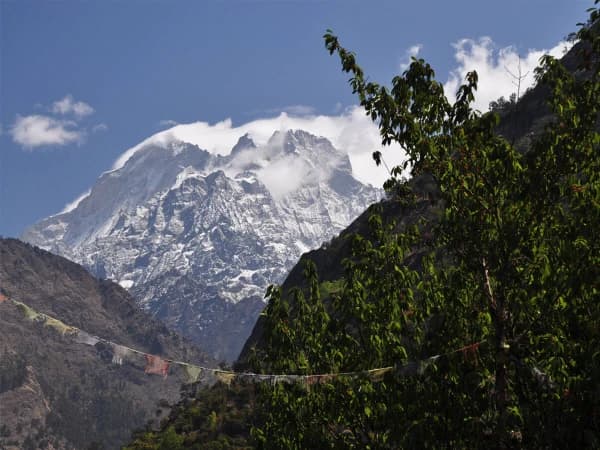
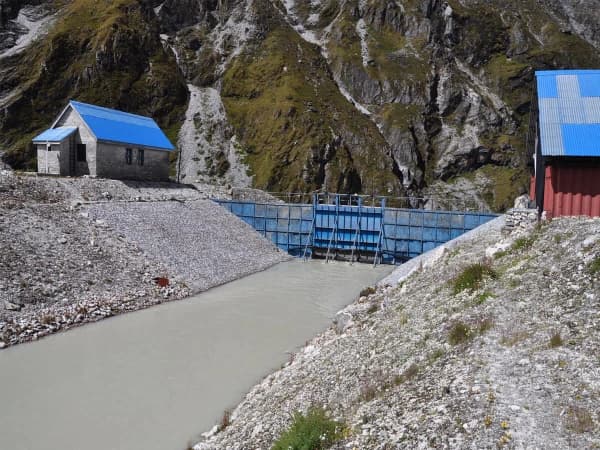
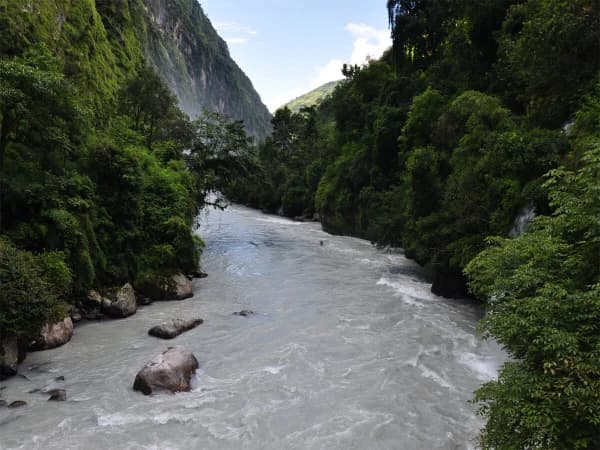
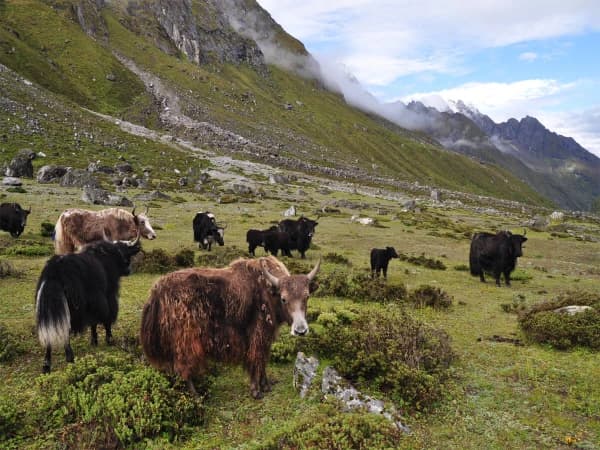
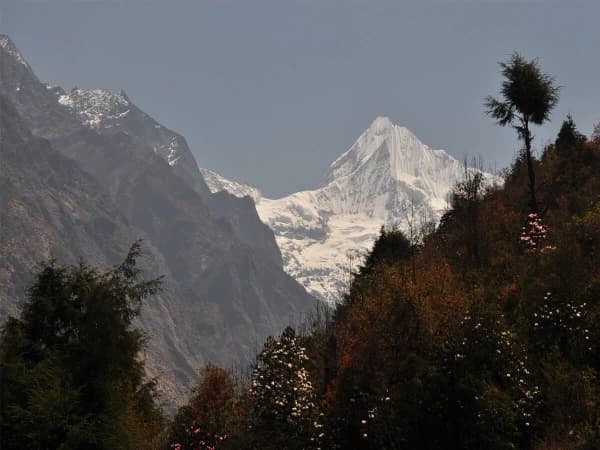
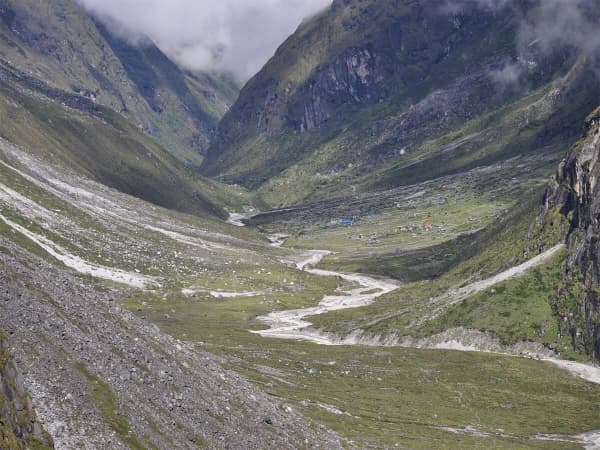

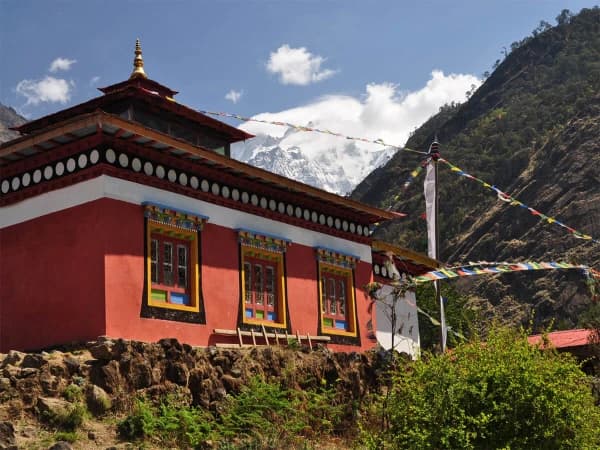

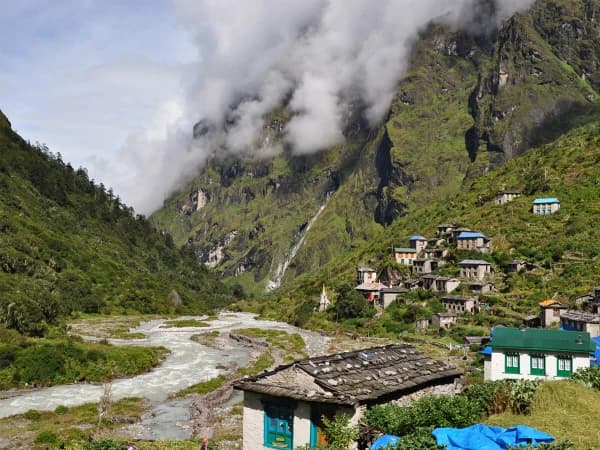
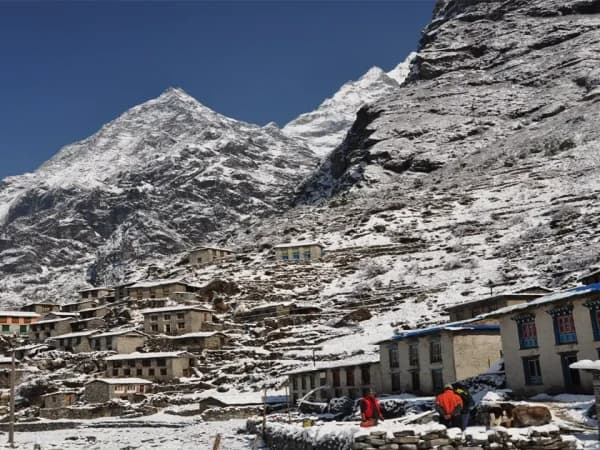
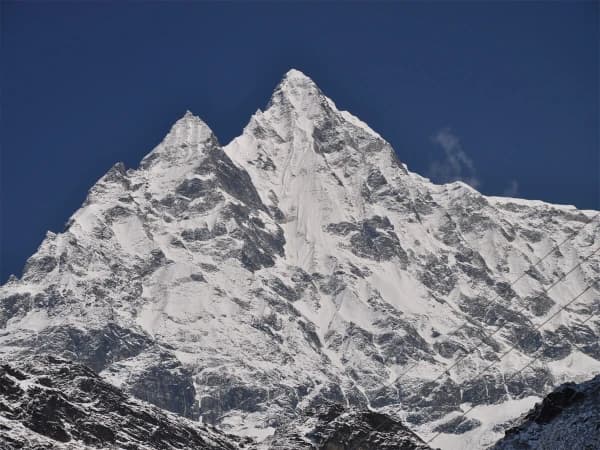
Tsho Rolpa Trek - 9 Days Itinerary Outline
- Day 01: Kathmandu arrival and transfer to your design hotel 1400 m/4592 ft/30 in drive
- Day 02: Drive from Kathmandu to Chhet-Chhet 196 km | Trek to Simigaon 3 km/ 2020 m./6627 ft. 6/7 hrs. drive and 2 hrs walk
- Day 03: Trek from Simigaon to Dongang 8/9 km./ 2791 m./9,157 ft. 5/6 hrs
- Day 04: Trek from Dongang to Beding 10/11 km./ 3690 m./12,106 ft./5/6 hrs
- Day 05: Trek from Beding to Na Village 5/6 km./4,180 m./13,714 ft./2/3 hrs
- Day 06: Hike to Tsho Rolpa Lake and Return to Beding 13/14 km(round trip)/4580 m/15026 ft./6/7 hrs
- Day 07: Trek from Beding to Simigaon 18 km/2020 m,/6627 ft/7/8 hrs
- Day 08: Trek from Simigaon to Chhet-Chhet 3 km/ 1410 m./4626 ft.1:30 hrs. Drive to Kathmandu 196 m,/6/7 hrs
- Day 09: Final Departure to Your Next Destinatinon
Tsho Rolpa Trek - 9 Days Itinerary
Upon your arrival at Tribhuvan International Airport in Kathmandu, a representative from Global Adventure Trekking will be there to warmly greet you. You will be transferred by private vehicle to your hotel in Thamel. You will visit the GAT office for the trek briefing and meet your dedicated trekking team.
*Note: If you don’t find our airport representative at the arrival terminal, please contact Rajan Dahal at +977-9841527668.
After breakfast at your hotel, you will prepare to set off on an incredible Tsho Rolpa Trek. Your journey begins with a scenic drive from Kathmandu along the Araniko Highway. This journey passes through rolling hills and small highway towns. Crossing smooth blacktopped sections and off-road paths, you make your way to the Dolakha district.
From Dolakha, you will continue your drive to Chhet-Chhet to officially begin the Tsho Rolpa Trek. The trek begins with a gradual ascent to Simigaon, lasting approximately two hours. Simigaon is a quaint hillside Sherpa village. Here, you will find the first glimpse of Gauri Shankar Himalai, 7,134 meters (23,405 feet), in the Rolwaling Valley's unique heritage, and experience their culture and hospitality.
Leaving Simigaon, the trail plunges into the deep river gorge, and you'll cross the first of many suspension bridges over the thundering Rolwaling Khola. The day is then a steady ascent through a forest of rhododendron and pine, with the sound of the river always below you. Keep an eye out for colorful prayer flags fluttering in the breeze, marking the path.
As you travel further, you will make your way through several charming villages like Uttise and Surmuche. You can take short breaks here and enjoy the surrounding environment. You will continue along the trails, offering breathtaking views of the surrounding landscapes comprising lush hills and the rushing Rolwaling River, as you head to the final stretch of today’s trek, Dongang.
Dongang is a small riverside settlement. You will spend a night here before heading to the higher altitudes of the Tsho Rolpa Lake trek.
Today, you will experience a significant gain in altitude as you head to Beding, the main village in the Rolwaling Valley. From Dongang, you will continue your trek following the trail along the Rolwaling Khola on an uphill climb through dense forests of pine and rhododendron. The path takes you across suspension bridges and through small clearings of Thanding Karkha. Here, you will stop for lunch.
As you reach higher elevations, you will notice the lush vegetation beginning to thin. Likewise, the landscape opens up, offering views of the magnificent mountains. Complete a 5-hour trek from Dongang to reach Beding. In this village situated by the riverbank, you will find several stone houses with a Buddhist monastery as its key landmark.
Your journey today is short and easier. This route further helps you acclimatize to the increasing altitude and environment of the Tsho Rolpa trek.
Today, you will wake up in the early hours and visit the Beding Monastery. Observe the monastic rituals and interact with the resident monks before heading back to your teahouse for breakfast. After breakfast, you will trek from Beding to Na Village along the scenic trails following the Tsho Rolpa River. As you move ahead, you will find the valley widening into pastures and pass by mani stones and prayer flags to Na. Along the journey, you can encounter elusive wildlife, including Nepal’s national bird, the Danphe, and the Impeyan pheasant, or the Himalayan Monal.
Na Village is a seasonal settlement used by the residents of Beding for agriculture, particularly for growing potatoes and raising livestock. This beautiful, open valley offers stunning panoramic views of the high peaks that surround you, providing a taste of the Himalayan grandeur that awaits at the glacial lake.
Today is the day all your efforts have led to. After an early start from Na, the trail gradually ascends before presenting its final challenge: the glacial moraine. This is a rugged, otherworldly landscape of rock and ice debris left by the glacier's retreat. It requires careful footing, but our guides will lead the way safely.
The reward for this final push is a moment of pure Himalayan magic. As you crest the final ridge, the valley falls away to reveal the spectacular, turquoise expanse of Tsho Rolpa Lake. Cradled by a magnificent amphitheater of snow-capped giants, the lake's sheer scale and vivid color are truly awe-inspiring. We'll find a spot by its shores to rest, absorb the profound silence, and enjoy a well-deserved hot tea from the small teahouse overlooking this masterpiece of nature. After soaking it all in, we will retrace our steps to Na for lunch before the final descent to Beding for the night.
Guide's Tip: The wind can be strong near the lake. Make sure you have your windproof jacket and beanie easily accessible in your daypack for this final section.
The return journey begins today with a long descent from Beding back to Simigaon. During this downhill journey, you can enjoy the Rolwaling Valley from a different perspective as you retrace your steps along the lush forests and familiar communities of Dongang and Surmuche before reaching Simigaon, where you will spend the night.
Today is your final day in the Rolwaling region. You will begin your day with an early morning breakfast and begin your descent to Chhet-Chhet. This is a short journey but involves steep descents.
In Chhet-Chhet, you will find prearranged transportation waiting for you to take you back to Kathmandu. After reaching Kathmandu, you will be transferred to your hotel in Thamel. You can take the time to rest and unwind before heading out to the bustling tourist district of Thamel for a celebratory dinner (at your own expense) with your fellow trekkers.
Today is your final day of the Tsho Rolpa Lake Trek. You will begin your day with breakfast at your hotel. After breakfast, prepare to leave for your next destination. Our representatives will help transfer you to the Kathmandu Airport from your hotel at least 3 hours before your scheduled flight. We wish you to have wonderful journey back home.
Tsho Rolpa Trek - 9 Days Cost Details
Includes
Transportation
- Airport pick-up and drop-off by private vehicle (6 km/30-minute drive)
- Two-way transportation between Kathmandu and Chhet-Chhet in a shared Jeep or bus.
Tsho Rolpa Circuit Trek Permits Fees:
- Gaurishankar Conservation Area Permit
- TIMS Card
Accommodations:
- 6-night tea house accommodation during the trek as per the itinerary
- 2-night hotel accommodation in Kathmandu (Tourist standard, twin Sharing), including breakfast
Meals
- Full-board meals (Breakfast, Lunch, and Dinner)
- Seasonal Fruits
Additional Gear
- Sleeping bag and down jacket, if required
- Company Duffel Bag and T-shirt
- Tsho Rolpa Trekking Map
Guides
- Government-certified, well-experienced Global Adventure Trekking guide
- Salary including insurance, equipment, accommodation, and food for your Nepalese Guide
Excludes
International Flights and Visa Fees
- International flights to and from Nepal
- Nepal Entry Visa Fees
Additional Expenses
- Entry fees or donations, museums, monasteries, while trekking, etc
- Rescue and Evacuation
- Emergency evacuation by Helicopter
- Accommodation and Services
- Extra night hotel and food in Kathmandu in case of an earlier return from the mountain than the scheduled date.
- Laundry, towels, hot showers, internet access, recharging of batteries, and other items of a personal nature.
Transportation
- Alternative transportation in case of heavy rain, landslides, strikes, road blockades, etc.
Meals
- Meals other than those listed in inclusions (Hot and cold, alcoholic and non-alcoholic drinks)
Guides and Porter Expenses
- Porters (20 kg max weight limit)
- Tips for the guide and the porter
Add-ons & Options
Hotel in Kathmandu: You can extend your stay at a 3-star standard hotel in Kathmandu, equipped with all modern amenities, for an additional cost of USD 50 per night. Rooms are provided on a twin-sharing basis on BB plan
Porter Services: Hiring a porter isn't a luxury; it's a strategic choice for a safer and more enjoyable trek. A porter carries up to 20 kg of your gear, allowing you to focus on the trail and conserve energy for the high-altitude sections. Cost: USD 160 per porter for the entire trek (can be shared between two trekkers).
Transportation Options: For a more personal commute with just your trekking team, hire a jeep between Kathmandu to Chhet-Chhet and back for an additional cost of USD 150 each way.
Dates & Availability
Select your preferred date
Essential Information
Tsho Rolpa Trekking Permits
To complete the Tsho Rolpa Trek, you will need the following two permits:
- Gaurishankar Conservation Area Permit (GCAP):
The Gaurishankar Conservation Area Permit is mandatory to enter the protected region along the Tsho Rolpa Trek. This permit costs USD 30 per person.
- Trekkers’ Information Management System (TIMS) Card:
The TIMS card helps keep a record of the safety and security of trekkers in Nepal. This card costs USD 20 per person.
*Note: Permit costs are subject to change by the Nepal Tourism Board. We handle all permit arrangements for you in advance to ensure a hassle-free trekking experience.
Tsho Rolpa Trek: New Trail Regulations 2025 and 2026
Mandatory Guide Requirement: According to the new regulations effective since 2023, all foreign trekkers in Nepal are required to be accompanied by a licensed trekking guide. You should further book your tours from a registered trekking company. This ensures your safety and supports the local economy.
- Strict Drone Usage:
Using drones requires obtaining multiple permits from various government bodies, including the Civil Aviation Authority and the Ministry of Home Affairs. Contact our experts to assist with this complex process.
- Waste Management:
Trekkers are encouraged to minimize their carbon footprint and environmental impact. To adhere to the practices of sustainable tourism, you are encouraged to practice responsible waste disposal.
When to Go on the Tsho Rolpa Trek?
Tsho Rolpa Trek offers off-the-beaten-trail adventures into the serene trails of the Himalayas. This trek can be best enjoyed during Spring (March to May) and Autumn (September to November). Trekking in spring introduces you to the vibrant trails engulfed in rhododendron and wildflower blossoms. The temperatures are mild, allowing for ideal conditions for trekking.
Likewise, autumn (September to November) is best known for its crisp visibility. The post-monsoon season dramatically reduces the chances of rainfall disrupting your Tsho Rolpa Lake journey. Furthermore, the weather is stable and provides unobstructed views of the mighty Himalayan landscapes.
Tsho Rolpa Trek: Seasonal Overview
| Season | Weather Conditions |
| Monsoon (June to August) |
|
| Autumn (September to November) |
|
| Winter (December to February) |
|
| Spring (March to May) |
|
Accommodation during the Tsho Rolpa Trek in Nepal
Throughout the Tsho Rolpa Trek, you will find basic teahouse accommodations. These teahouses provide you an authentic glimpse into the lifestyle of the Rolwaling Valley and its local communities. You will find simple, yet clean and hygienic twin-sharing rooms with welcoming hospitality. Likewise, in Kathmandu, you will find accommodations in well-equipped hotels with all amenities.
Extra Facilities
Electricity and Charging: Charging facilities are available in most teahouses for a small fee (typically USD 3-5 per device). However, electricity is often supplied by solar power and can be unreliable, especially during cloudy weather.
Wi-Fi and Mobile Network: This is a remote trek. Therefore, Wi-Fi facilities can be scarce. Mobile network is available in the first few days of the trek. After reaching higher altitude regions, you will lose a mobile tower, disconnecting you from the world.
Food and Drinking Water Facilities during the Tsho Rolpa Trek
Food during the Tsho Rolpa Trek: Throughout the trek, you will find simple yet nourishing meals. All teahouses serve the staple Dal Bhat and local delicacies like Sherpa stew, noodles, and fried rice. However, lower-altitude establishments may surprise you with Western cuisines like pasta and pancakes. Since the Tsho Rolpa Lake is a remote trek, the food variety is limited compared to mainstream treks like the Everest Base Camp trek and the Annapurna Base Camp trek.
Drinking Water: To ensure better acclimatization, we recommend staying hydrated. Drink 3 to 4 liters of fluid daily. However, ensure that your water is sanitized and is free from contaminants. You can purchase bottled water in some resthouses and teahouses. However, a more sustainable and cost-effective method is to carry your reusable bottle. You can buy boiled water from the teahouses, or treat tap water with purification tablets or a UV purifier.
How Difficult is the Tsho Rolpa Trek in Nepal?
The Tsho Rolpa Trek is a journey into the remote regions of the Rolwaling Valley. This off-the-beaten-path Nepal trek takes you into moderately difficult Himalayan terrains. The trek takes you to a maximum elevation of 4,580 meters (15,026 feet) to the sacred Tsho Rolpa Lake. Due to its high altitude, there are chances of Acute Mountain Sickness (AMS) or altitude sickness. Take necessary precautions to minimize its risk. However, the Tsho Rolpa Trek does not involve technical climbing and is considered suitable for trekkers of all abilities.
Considering that your journey includes remote locations with fewer footfalls even during the peak season, it is crucial to be accompanied by an experienced guide. Also, there are steep ascents and descents; ensure you have good physical fitness, stamina, and endurance to complete this trek.
Acclimatization for the Tsho Rolpa Trek
Since the Tsho Rolpa Trek includes dramatic Himalayan terrain, there are chances of Acute Mountain Sickness. If you don’t take necessary caution, you may begin experiencing the symptoms of altitude sickness like dizziness, headache, and nausea at altitudes above 2,500 meters.
However, our Tsho Rolpa Trek itinerary is designed to allow a gradual ascent, allowing your body to better adapt to the increasing altitude and lower oxygen levels of higher elevations. Additionally, our itinerary includes acclimatization days before reaching the higher altitude of Tsho Rolpa Lake. During the acclimatization days, we recommend staying active and taking short hikes to higher elevations before returning to a lower altitude point to sleep.
Why Book the Tsho Rolpa Lake Trek with Global Adventure Trekking?
Global Adventure Trekking takes pride in being your trusted Nepal travel partner. We prioritize safety and cultural immersion on every trek. Our reliable and highly experienced guides and support team ensure an unforgettable Himalayan experience. Furthermore, our 27+ years of experience in Himalayan adventures help deliver results that meet our clients' preferences.
While booking the Tsho Rolpa Lake Trek with Global Adventure Trekking, you can be assured of:
- Seasoned and professional guides.
- Guides and support staff with fluency in English and conversational skills in several other languages.
- Good knowledge of local languages.
- From your first email to your final farewell, you will receive prompt, professional, and personalized service from our dedicated team.
- The guides and all the staff members of Global Adventure Trekking provide the most professional services. This helps us ensure proper facilities and services for all the individual trekkers.
- Free pre-trek consultation from expert guides
- Flexible booking dates.
- Special offers
- Affordable prices
- Friendly services
Furthermore, we focus on communal sustainability and economic development of the rural trekking routes. We provide 5% of our total income toward the welfare of these rural communities.
Preparing for the Tsho Rolpa Trek: Gear/ Essentials Checklist
Here is a complete checklist of trekking gear and equipment for the Tsho Rolpa Trek.
Head:
- Trekking Hat/Cap
- Headlamp/Flashlight (with extra batteries), good quality
- Sunglasses (UV protection)
- Woolen hat /Beanie (for cold weather)
- Bandana/Buff (for dust and sun protection)
- Sunblock (Sunscreen) (SPF 40 or higher)
- Insect Repellent (any trekking areas)
Body:
- Base Layer Shirt: Two (moisture-wicking, breathable fabric)
- Trekking Jacket: A pair of lightweight (water-resistant/windproof)
- Insulating Layer: A pair (fleece, down jacket, or sweater for warmth)
- Rain Jacket/poncho (lightweight, waterproof)
- Trekking Trousers/Pants: Two pairs (comfortable and durable)
- Long-sleeve shirt: 1 pair (for sun or insect protection)
- Underwear: Two pairs (moisture-wicking, quick-dry fabric)
- Compression Garments (for reducing muscle fatigue, optional)
- Gore-Tex or a similar waterproof jacket
Lower Body:
- Trekking Pants: Two pairs (convertible into shorts if needed)
- Thermal Leggings: one (for cold weather)
- Shorts: Two (optional, for warmer weather)
- Knee Guards/Support (for those who need extra knee protection)
- Hands: Protect your hands with warm gloves
- Light inner gloves (for lower-elevation trekking)
- Insulated or down gloves (high-altitude trekking)
- Waterproof gloves (wet season)
Footwear:
- Trekking Boots/Shoes (comfortable, waterproof, with good grip and ankle support)
- Gaiters (to protect from mud, snow, or rocks entering boots)
- Thick Socks: Two pairs (merino wool or synthetic, moisture-wicking)
- Lightweight Socks: Two pairs (for warmer weather or layering)
- Sandals/Flip-flops (for campsite/rest stops)
Extra Suggested Items:
- Sleeping bag
- Drying towel
- Trekking Poles
- Cash (extra Nepali rupees for additional expenses)
- 60L+ Backpack (Rucksack) (with rain cover and hydration system)
- Hydration System/Water Bottles/Camelback
- Water Purification Tablets/Filter
- Snacks (Energy Bars, Dried Fruits, Nuts
- First Aid Kit (with basics like bandages and antiseptic, as per personal need)
- Multi-tool/Knife
- Trekking Map or GPS
- Portable Power Bank (to charge devices)
- Camera or Smartphone (to capture the views)
- Toiletries (toothbrush, toothpaste, biodegradable soap, shampoo, etc.) Feminine hygiene products as needed
- Wet wipes
- Emergency Whistle
- Dry bags
- Clothing Layer
- Duct Tape
- Hand sanitizer
- Fire-starting Kit (matches, lighters)
- Plastic Bags for Waste (Leave no trace principle)
- Notebook/Journal (for documenting the trip)
Tilicho Lake Trek vs Tsho Rolpa Trek
Both Tilicho Lake Trek and Tsho Rolpa Lake Trek offer serene journeys with immersive cultural experiences. However, each trek is distinct from the other and offers distinct features and adventures. We have listed the key differences below:
|
Tilicho Lake Trek |
Tsho Rolpa Lake Trek |
|
The Tilicho Lake Trek falls under the Annapurna region and is often an extension of the Annapurna Circuit Trek. |
Compared to the Tilicho Lake Trek, the Tsho Rolpa Lake Trek is a more serene and off-the-beaten-path trek in the remote Rolwaling Valley. |
| Tilicho Lake is situated at an elevation of 4,919 meters. | Tsho Rolpa Lake is the maximum elevation of this trek, reaching a height of 4,580 meters. |
|
A major challenge of this trek includes crossing the Thorong La Pass at 5,416 meters. |
The Tsho Rolpa Lake trek does not involve high pass crossing, but the offbeat paths and fewer footfall make this journey challenging. |
Tsho Rolpa Trek - 9 Days FAQs
All high-altitude trekking involves inherent risks. However, the Tsho Rolpa trek is not considered technically dangerous, as it doesn't require climbing skills. The main challenges are the rugged terrain and the risk of Acute Mountain Sickness (AMS). Our itinerary is specifically designed with gradual acclimatization to minimize AMS risk, and our experienced guides are trained in wilderness first aid to ensure your safety.
Teahouses on the Tsho Rolpa trek offer basic but comfortable lodging, providing a genuine glimpse into local life in the Rolwaling Valley. Accommodations typically consist of simple twin-sharing rooms with basic mattresses, and shared toilet facilities.
Mobile phone signals are available in the lower regions of the trek but become unreliable or completely unavailable as you ascend to higher altitudes. While some teahouses at lower elevations might offer Wi-Fi for a fee, it is often slow and not dependable.
While not mandatory, hiring a porter for the Tsho Rolpa trek is highly recommended due to the remote and strenuous nature of the trail. A porter carries your main luggage, allowing you to trek more comfortably and focus on navigating the challenging terrain, which enhances both safety and enjoyment.
The Tsho Rolpa trek is a more remote and less crowded experience, offering a sense of solitude not found on the popular Everest Base Camp or Annapurna Base Camp trek. While the Everest trek reaches a higher maximum altitude and can be more physically demanding in that regard, Tsho Rolpa's challenge comes from its rugged terrain and more basic teahouse facilities.
| Feature | Tsho Rolpa Trek |
Everest Base Camp Trek |
Annapurna Base Camp Trek | |
|
Crowds |
Very Few off-the-beaten-path |
Very crowded in peak season |
Crowded as it is, it is among the most popular Himalayan trekking destinations | |
| Accommodations | Basic teahouses |
Wide range of accommodation from basic teahouses to luxury stays |
Teahouse accommodation with good amenities and services |
|
| Challenge | Moderately Difficult |
Strenuous |
|
|
| Experience | Raw wilderness, cultural authenticity |
Iconic peaks, bustling trail life |
Diverse landscapes and villages |
Yes, you should carry extra cash in Nepali rupees during the trek. This is necessary for personal expenses not covered in tour packages, such as hot showers, charging electronic devices, Wi-Fi where available, drinks, snacks, and tips for your guide and porter.
The Tsho Rolpa Trek is generally recommended for those with some prior trekking experience due to its strenuous nature and remote location. The trek involves long hiking days on rugged terrain with significant altitude gain, which can be very demanding without previous experience.
Yes, the Tsho Rolpa Lake Trek is possible during winter. However, this is recommended only to seasoned trekkers who are experts in navigating the way through dense snow. Also, as most of the teahouses remain closed, you will need to pack extra and additional gear and equipment to face the harsh winter conditions of the Himalayas.
The Tsho Rolpa Lake Trek is a moderately difficult journey. Trekkers with all expertise and abilities can complete this trek. However, the route pass connecting the Everest and Rolwaling regions is the Tashi Lapcha La Pass, which is exceptionally challenging and recommended only to expert trekkers.
A dedicated rest day ensures better acclimatization, allowing your body to cope with the increasing altitude. However, our itinerary includes gradual ascents with sufficient rest throughout your journey. This helps your body adjust to the high-altitude conditions, helping you create a safe and memorable Tsho Rolpa Lake Trek.
Yes, you should carry extra cash in Nepali Rupees during the trek. This is necessary for personal expenses not covered in tour packages, such as hot showers, charging electronic devices, Wi-Fi where available, drinks, snacks, and tips for your guide and porter.
